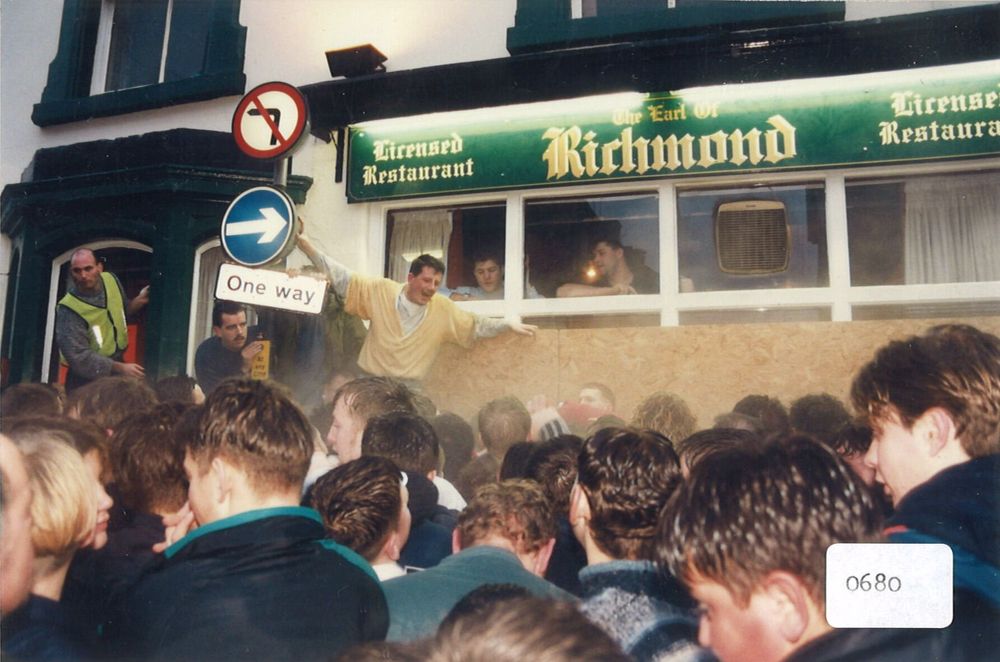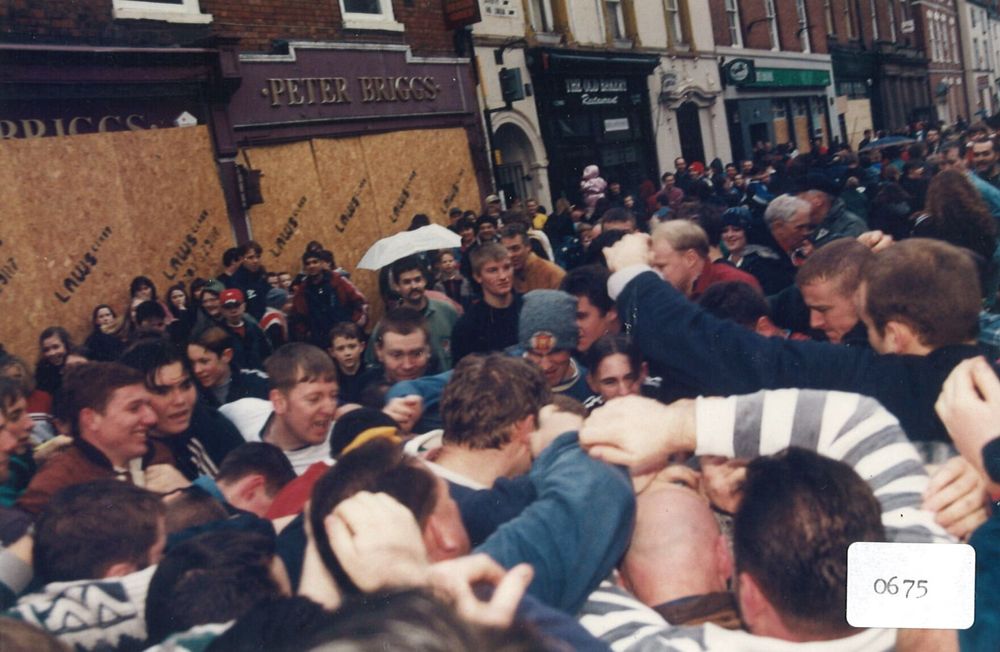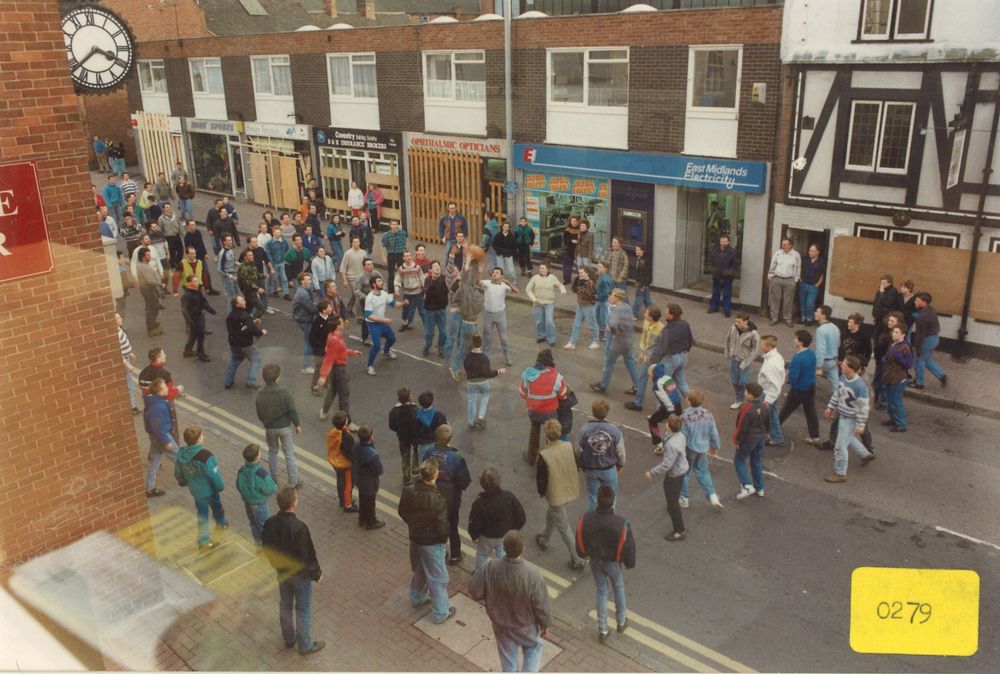Curious competitions:
The most eccentric heritage games
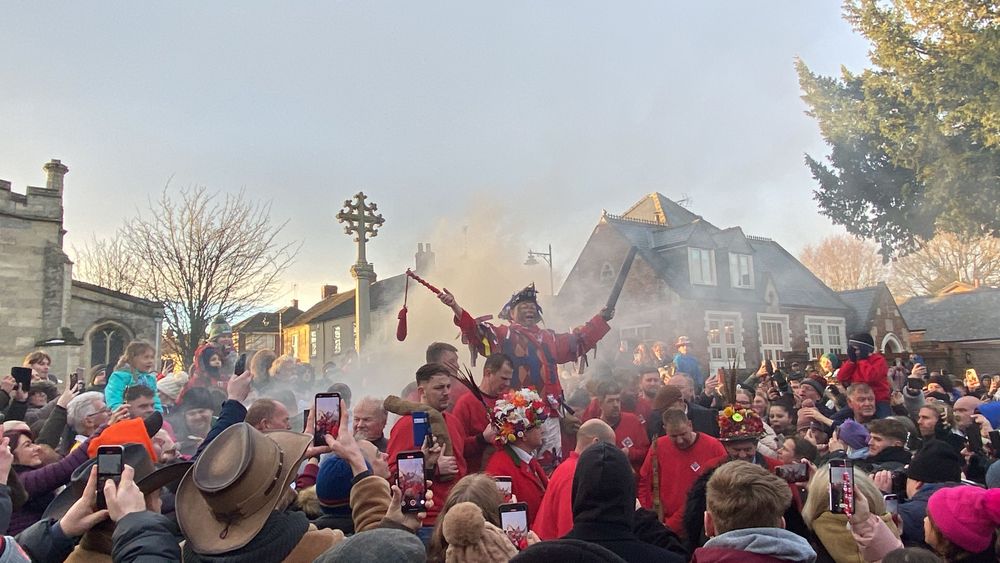
'Smoking the Fool', outside St Nicholas' Parish Church in Haxey, North Lincolnshire. A pre-match ritual for The Haxey Hood. Photo: LibraryOn.
Long before VAR, mega sponsorship deals and esports, England's towns and villages spent centuries playing their own local games.
Part pageant, part battle, part ritual, part drinking contest — and always an excuse for people to get together and have a laugh.
These traditions are stitched from scraps of folklore, full of disputed origin stories and old family feuds. To this day they still bring out huge displays of local pride and community spirit.
From using leather balls to settle ancient disputes, to becoming world champion of pulling the ugliest face, what do these customs reveal about the communities that still keep them alive?
And how can library special collections uncover the histories of these unique customs?
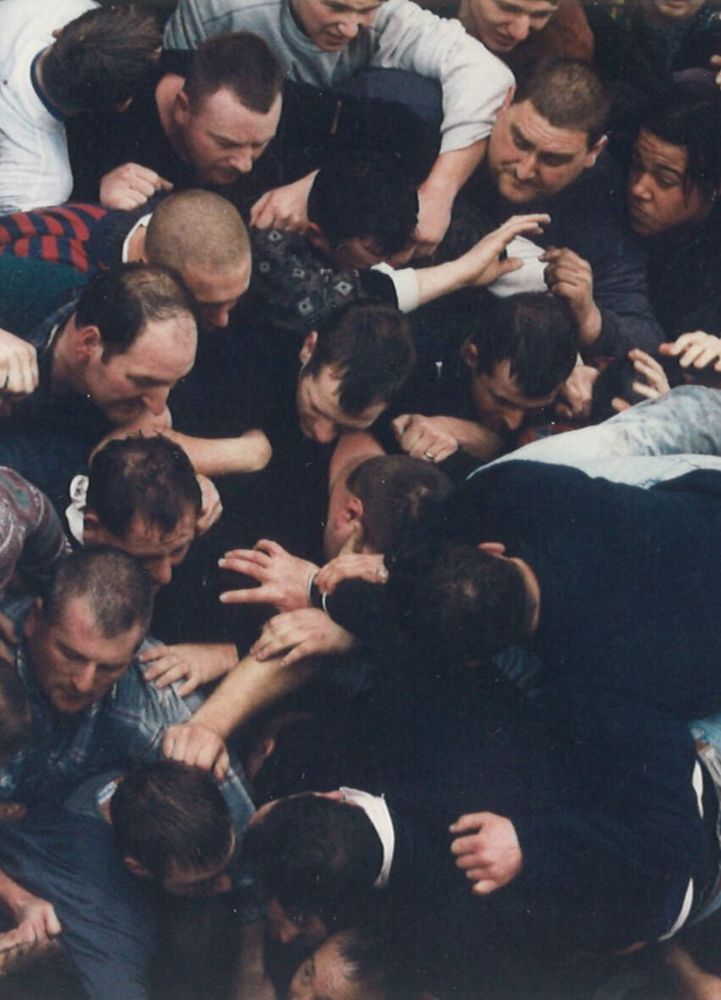
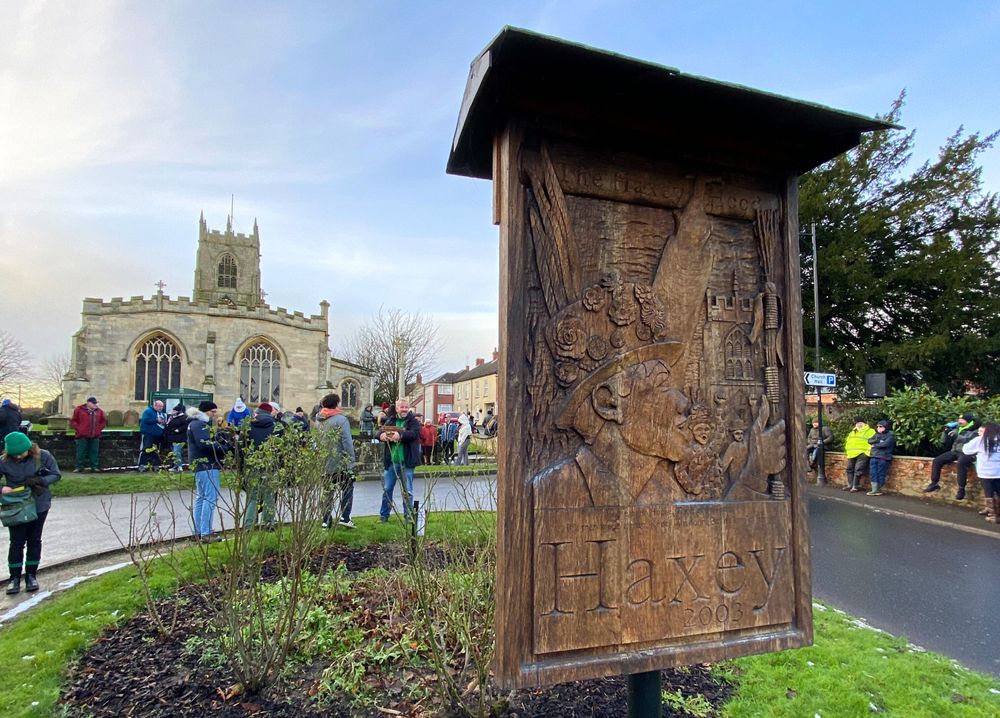
Sign commemorating the Haxey Hood, outside St Nicholas' Parish Church. Photo: LibraryOn.
The Haxey Hood
House against house,
Town against town,
If a man meets another man,
Knock him down,
(But don't hurt him!)
So begins the Haxey Hood.
Every Old Christmas Day since 1359, people from Haxey and nearby villages have gathered to join the Sway, one of England's oldest — and muddiest — scrums.
Their aim is simple: to push a leather tube, called the Hood, into one of four local pubs — The Loco, The Carpenters Arms, The Kings Arms or The Duke William.
The game starts with a ritual called Smoking the Fool. Afterwards the crowd assembles in the Hood Field, a hill between Haxey and Westwoodside.
A tight pack forms. In the centre, a guest or local figure recites the ‘House against house’ poem. They then throw the Hood into the air and the Sway begins.
After two or more hours of play, slowly trampling anything in its path, the Sway eventually reaches one of the pubs.
The winning pub gets to hang the Hood above the bar until the next year’s game. They usually give everyone a free round of drinks too!
📍 Location: Haxey, North Lincolnshire
📜 Origins: 1350s (or earlier?)
📅 When: Annually on 6 January, unless it falls on a Sunday
👑 Officials: Lord of the Hood, 12 Boggins (including a Chief Boggin) and the Fool
🎯 Aim: To force the Hood (a two-foot leather tube) across the threshold of one of four local pubs
⚖️ Rules: No running, no kicking, no throwing. Play must stop whenever anyone in the Sway falls over. The game continues indefinitely until the Hood crosses a pub's threshold
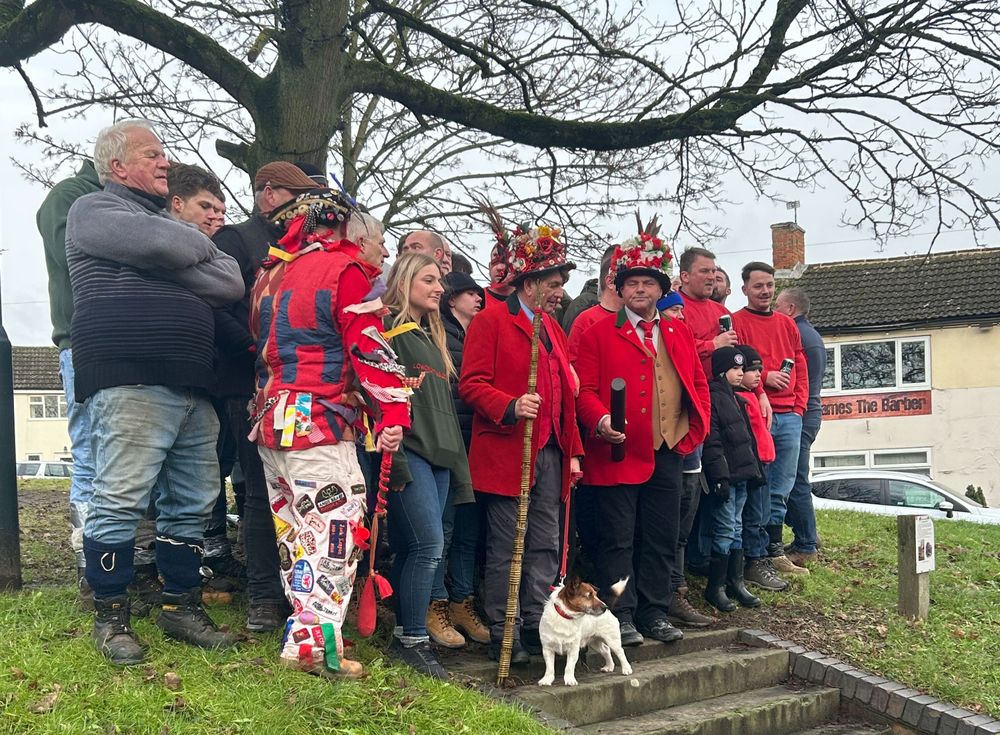
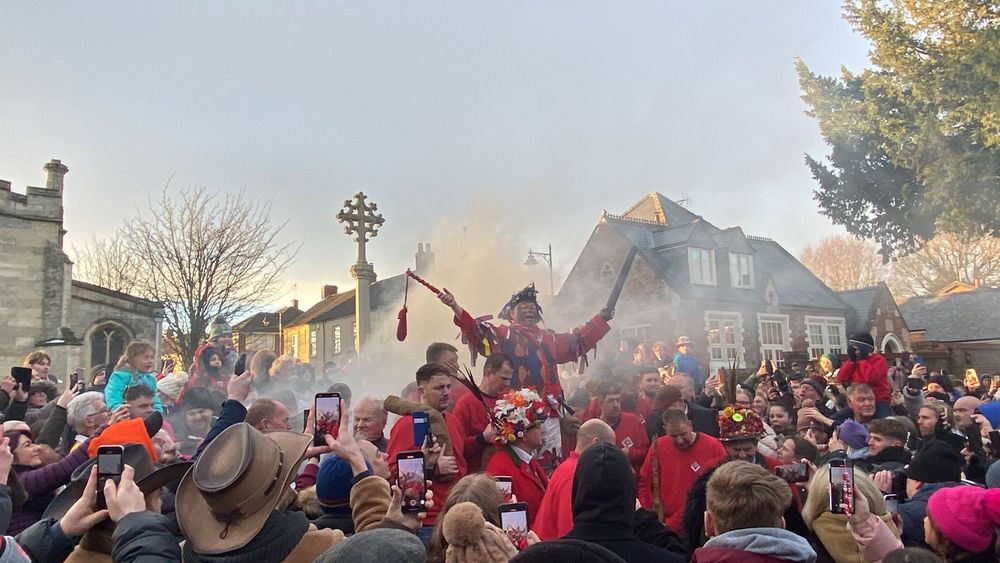

Members of the LibraryOn team, hosted by North Lincolnshire Libraries, were lucky enough to attend the Haxey Hood in 2025.
It was the 666th instalment of the competition and was won by The Loco.
Use the hotspots on the photos to discover the Hood's key figures, objects and rituals.
Contested beginnings
Local legend says the Hood game began in the 14th century.
Lady de Mowbray, wife of the local landowner, was riding on the Isle of Axholme when a strong Lincolnshire breeze blew the red hood from her head.
13 farmhands chased the hood, eventually catching it in a field between Haxey and Westwoodside.
The boy who caught the hood was too shy to hand it back. A bolder friend did the honours. Lady de Mowbray praised him as a 'Lord', and called the shy boy a 'Fool'.
She rewarded the men with 13 half-acres of land and was so tickled by the event that she ordered a re-enactment every year.
💡 It's a neat story, but could there be another explanation?
The Lord's willow wand, the red costumes and feathered hats, the 13 'Boggins', the mock burning and the Hood itself — which doesn’t look like a hood at all — are not explained by the medieval tale.
"Students of folklore will probably recognise a much more ancient origin, and possible survivals of fertility rites" (Lincolnshire Folklore, Ethel R. Rudkin)
Smoking the Fool
The game is overseen by 12 attendants in red outfits known as Boggins. They are led by the Lord of the Hood and the ceremonial 13th Boggin — the Fool.
After touring the local pubs, singing folk songs and spreading cheer, the Boggins gather everyone outside St Nicholas' Church for the ritual of Smoking the Fool.
During the ritual, the Fool stands on a small platform called the Mowbray Stone.
Damp straw is lit behind him. In the past, the Fool was suspended over a bonfire, cut down and forced to scurry from the flames. Health and safety has (thankfully) intervened.
The Fool then gives a speech, joking about the year's events, running through the rules and finishing with the 'House against house' poem.
The poem's origins are ancient and unknown. Some believe the final line was added later to discourage violent play.
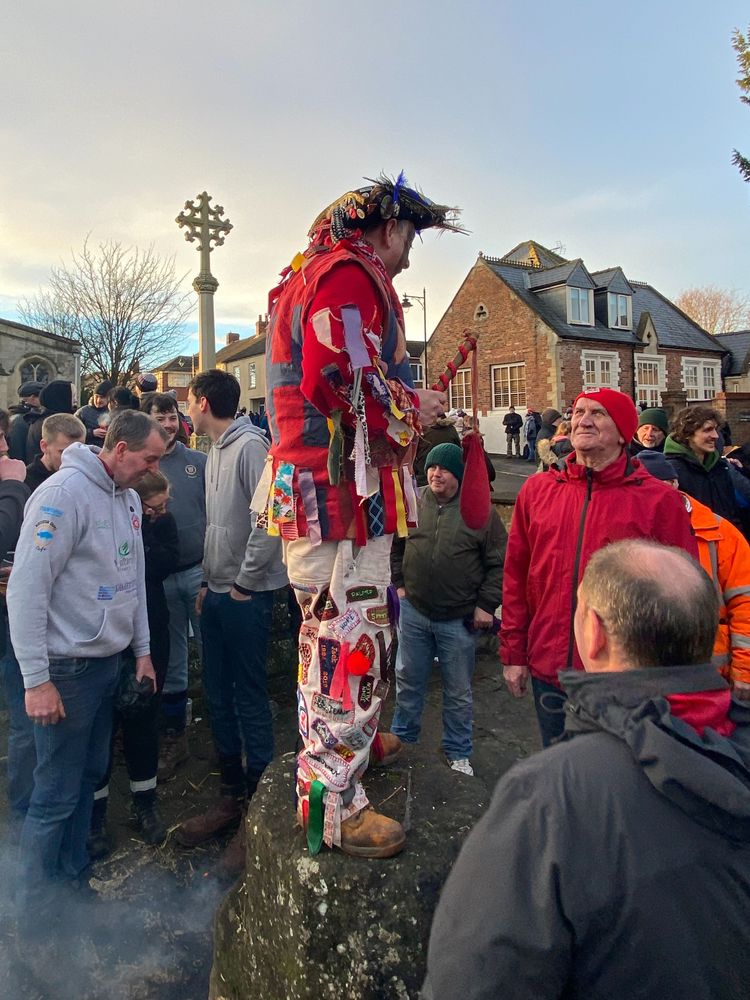
Learning more in the library
Tim Davies from North Lincolnshire Libraries explains how the local studies section at Scunthorpe Central Library helps people learn more about the Hood and its history.
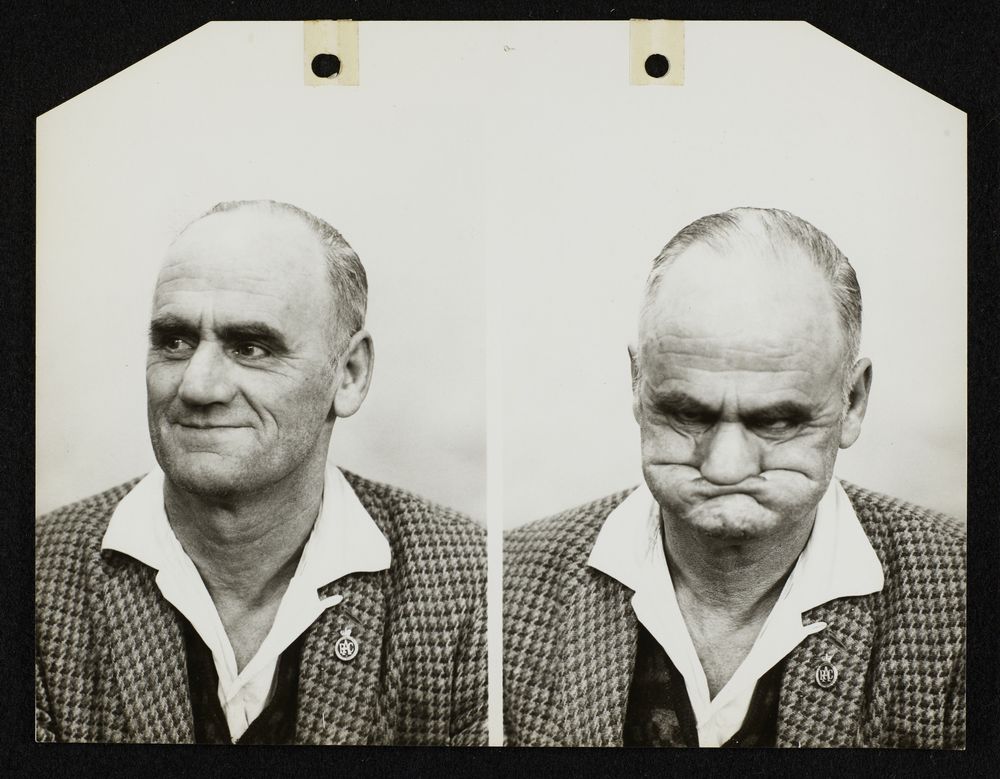
Headshots of Wyndham 'Taffy' Thomas, five-time gurning world champion. Taken by Ben Templeton in 1965. Source: Whitehaven Archives.
Egremont Crab Fair
The Egremont Crab Fair in Cumbria was first chartered in 1267 by Henry III as a market and harvest celebration.
It gave the Lord of the Manor a chance to thank local serfs for farming his land.
The 'Crab' in the name is thought to refer to crab apples, once thrown into the crowd from a horse-drawn cart.
This ritual takes place at midday and was originally called the Scattering of the Apples.
Now known as the Parade of the Apple Cart, the sour crab apples have been swapped for sweeter varieties.
But this story might be anachronistic. A 1775 account of the fair makes no mention of apple scattering, which suggests it may have more modern origins.
Past attractions included the cruel sports of bull baiting, cock fighting and "catching a pig with a soapy tail" (Memories of Egremont Crab Fair, R. Norman Roberts). These were banned in 1835.
Today's fair includes competitive pipe-smoking, Cumberland wrestling, greasy pole climbing, street racing, horse-jumping and the famous World Gurning Championship.
📍 Location: Egremont, Cumbria
📜 Origins: First chartered in 1267 by King Henry III
📅 When: Third Saturday in September
🏆 Main event: World Gurning Championship
🎯 Aim: To pull the ugliest — and funniest — face
🦀 Other games: Competitive pipe-smoking, greasy pole climbing, Cumberland wrestling
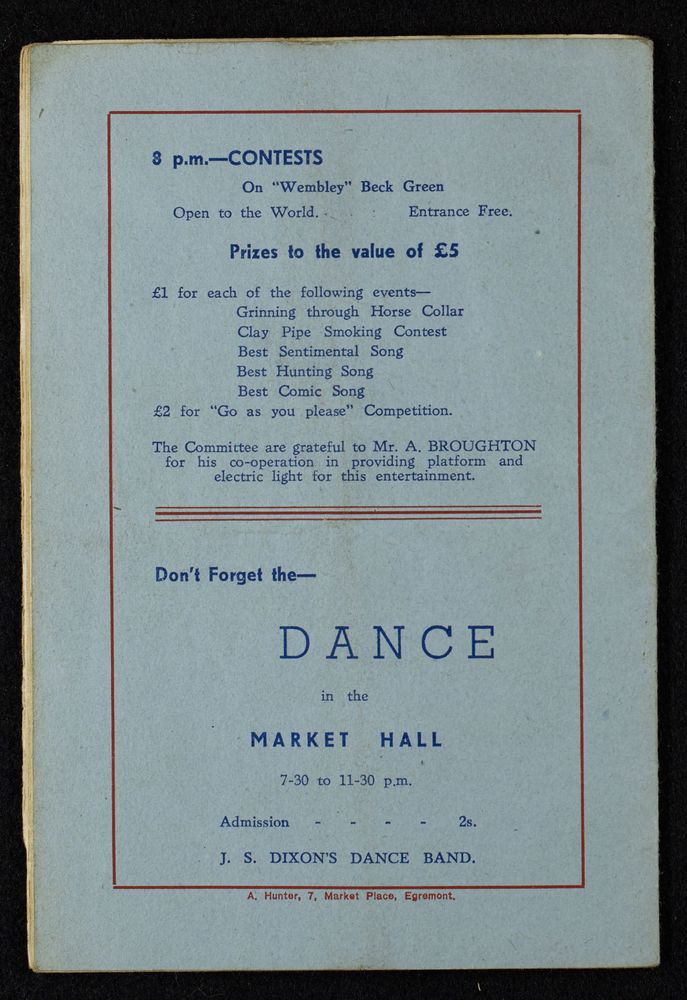
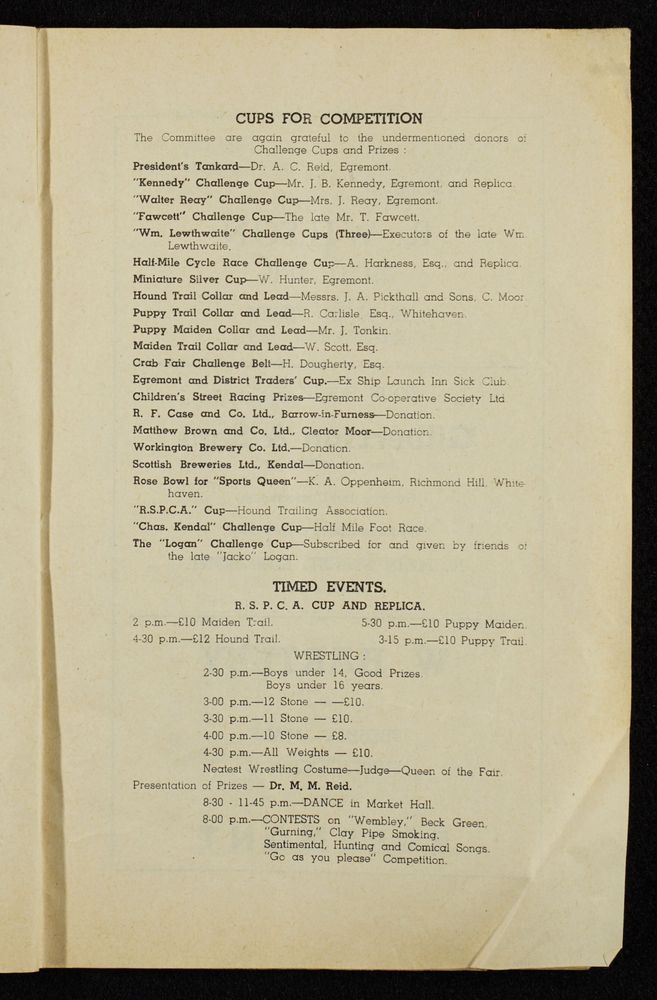
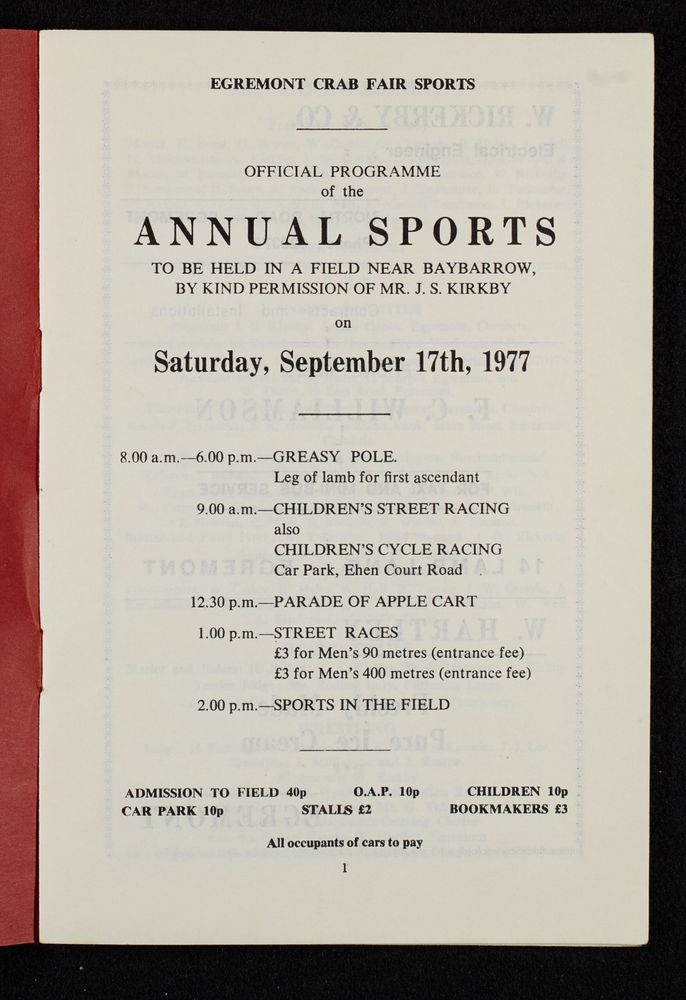
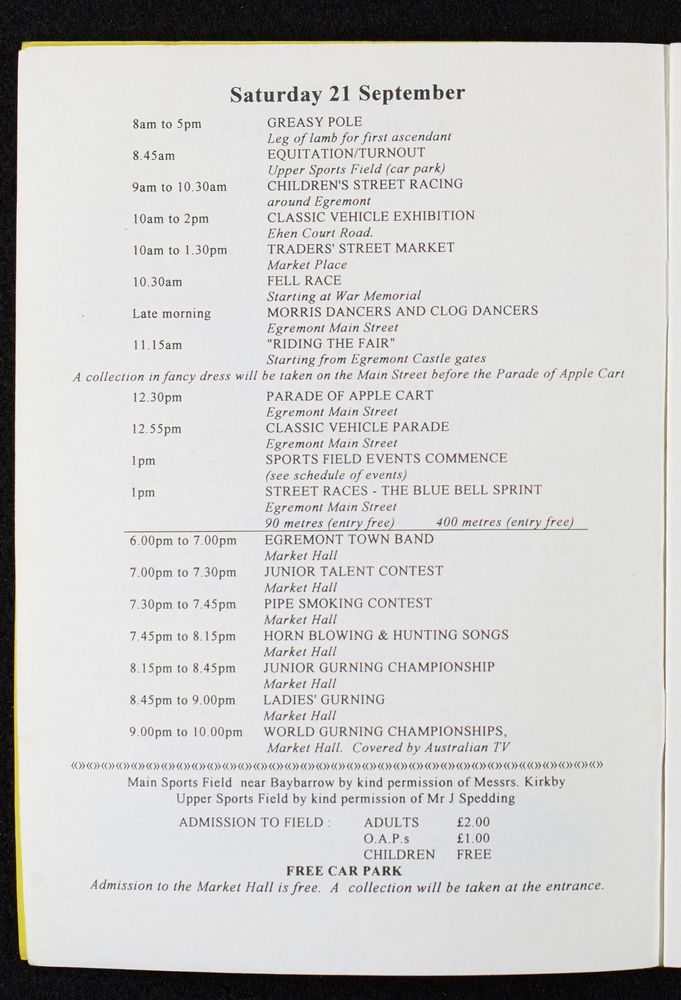
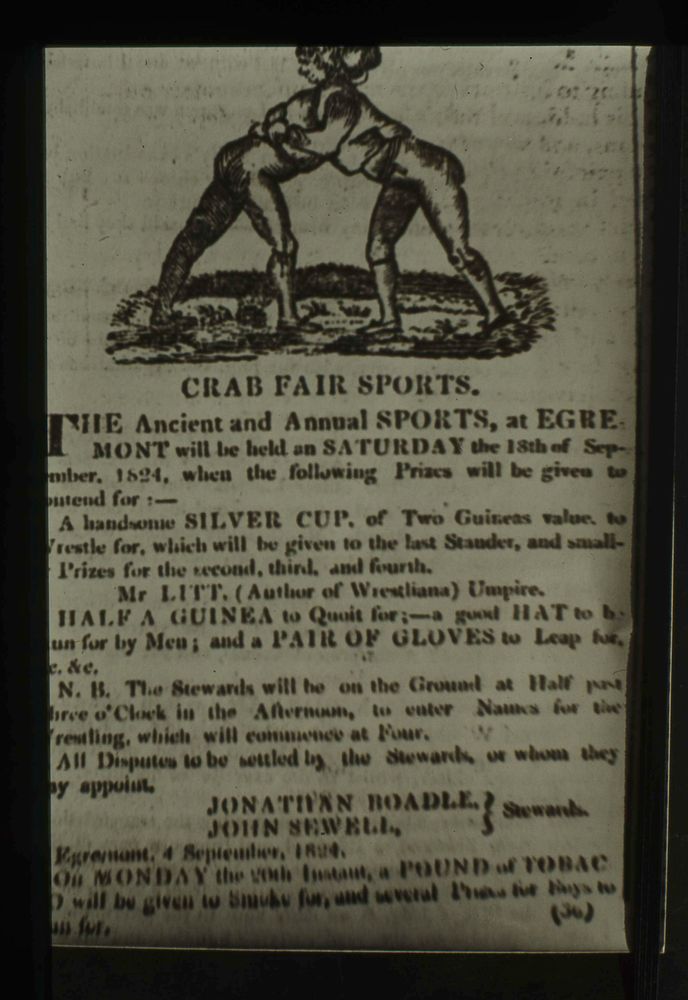
Programmes through the ages
Whitehaven Archive & Local Studies Centre is the home of Cumbria's local history archive.
As well as photographs and specialist local history books, the archive holds several historical Crab Fair programmes.
Extracts from the programmes of 1952, 1963, 1977 and 1996, as well as a slide advertisement from 1824, are digitised here for the first time.
Gurning for glory
Egremont Crab Fair's headline event is the World Gurning Championship.
To gurn means to twist your face into grotesque or hilarious shapes. At the Crab Fair, pulling a funny face reaches Olympian levels.
Contestants put their heads through a horse collar, or braffin, and pull their faces for a panel of local dignitaries and guest judges.
The game's origins are uncertain. Some say it began as a ritual mocking of the so-called village idiot. The earliest written mention comes from local newspaper The Cumberland Paquet in 1852, which called it an "ancient tradition".
Champions often hold on to their titles for years. Anne Woods dominated the women's division from 1977 to 2010, winning a record 28 times.
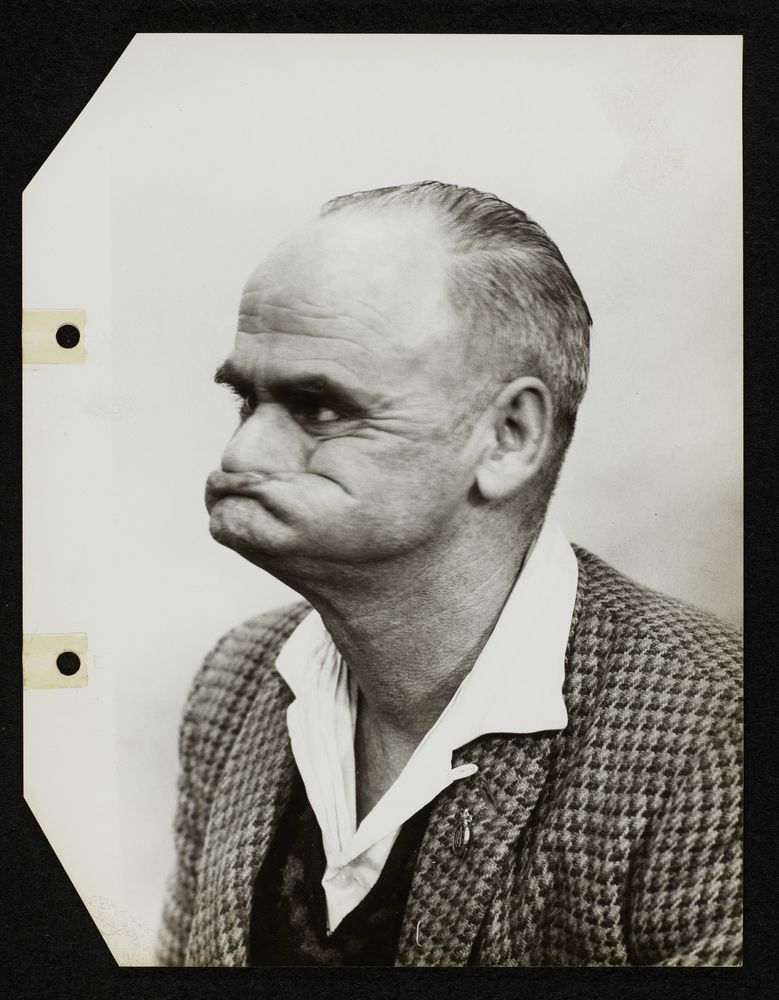
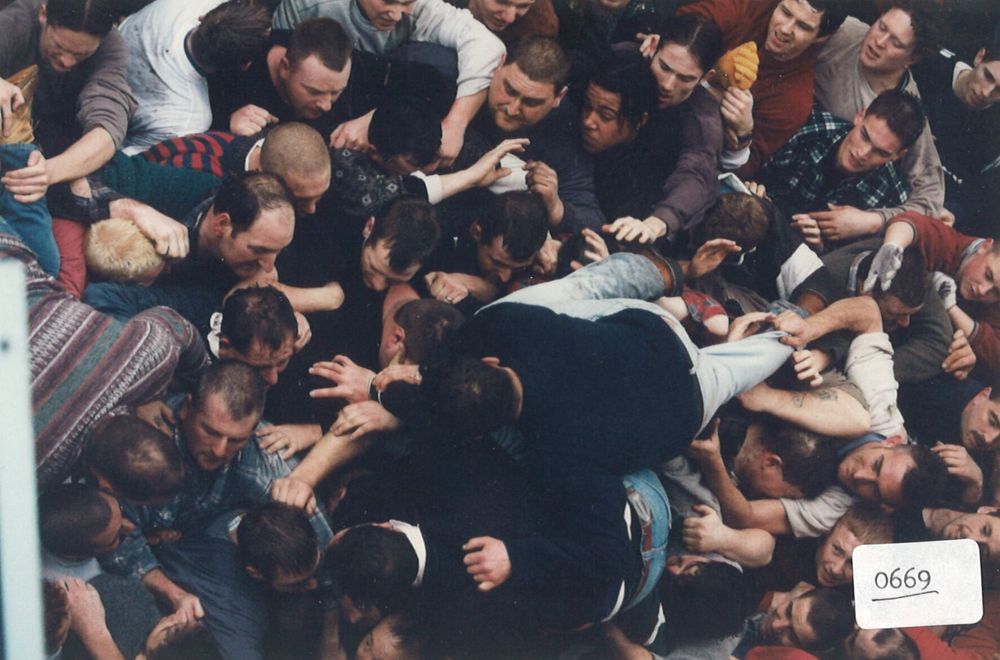
Atherstone Ball Game
At first glance, photos of the Atherstone Ball Game make it look like a lively, slightly cramped street festival.
But get too close and you'll get swept up in a centuries-old contest of Warwickshire grit.
Local legend says the game began in 1199, when Warwickshire and Leicestershire played a match of medieval football.
The prize? A bag of gold from King John.
Since then, Atherstone has played their own version of medieval football every Shrove Tuesday.
It starts when a large, heavy ball, filled with water and covered in ribbons, is dropped into the crowd.
Apart from keeping play to Atherstone's Long Street and asking players not to hurt each other too badly, there are almost no rules.
It's a free-for-all. Whoever is holding the ball when the church bell strikes 5pm wins.
📍 Location: Atherstone, Warwickshire
⏳ Origins: 1199 football match between Leicestershire and Warwickshire
📅 When: Every Shrove Tuesday
👥 Teams: None, everyone for themselves
🎯 Aim: The individual holding the ball at 5pm wins
⚖️ Rules: Players should avoid killing each other
On the ball
Events like the Atherstone Ball Game evolve over time, with each new generation putting their own stamp on the occasion.
Sometimes they inspire entirely new sports.
According to local historians, Warwickshire schoolboy William Webb Ellis (1806-1872) was so excited by an Easter trip to Atherstone that he brought a version of the game back to his school's playing fields.
With that, the game of rugby was born, named after Webb Ellis' school.
Whilst there's not much proof for this story, it invites us to look at the sports played, watched, and enjoyed around the world today and consider the weird and wonderful historical games from which they originate.
💡 Historically, the game was always started by a footballer or rugby player.
The most famous example was legendary England goalkeeper Gordon Banks, who kicked off proceedings in 1995.
In recent years this honour has been widened to celebrities from other fields, with famous faces including Sid James and Ken Dodd.
In 2024, the game was started by locally-born comedian Josh Pugh.
"No referee could declare the pitch unfit—for this game knows no referee. It's an all-in scramble."
The Tribune (1947)
Read all about it!
The Atherstone Ball Game has had plenty of controversy over the years.
Incidents such as property damage, injuries and even the use of fish as missiles have fuelled debates about whether the game should continue.
Local newspapers are the best place to find these debates — and plenty of comic stories too.
Warwickshire Libraries has gathered a collection of clippings from across the decades, available to view on request. Here are some highlights.

Clipping from The Atherstone News, 1934. Source: Warwickshire Libraries.
The 1934 game was the first to be broadcast by the BBC. The announcer, however, had to apologise for wrongly calling Atherstone a village.
The report in The Atherstone News adds:
"He assured listeners that the Town of Atherstone appeared in the Domesday Book, which was more than could be said of Birmingham."
Discover more
Partners
Thank you to North Lincolnshire Libraries, Whitehaven Archive and Local Studies Centre, Cumberland Libraries and Warwickshire Libraries for sharing your special collections with us.
